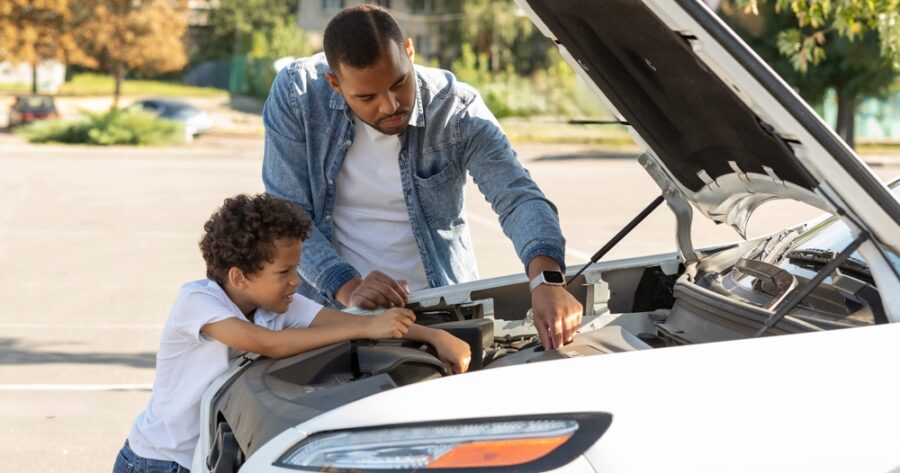Owning a vehicle comes with the responsibility of maintaining it to ensure it runs smoothly and safely. While some repairs require the expertise of a mechanic, there are several common repairs that you can handle on your own. Doing these repairs yourself not only saves money but also empowers you with practical skills. It builds confidence in your ability to address minor issues and helps you understand your vehicle better, ensuring it stays in good condition for longer.
Changing the Oil
Regular oil changes are vital for the longevity of your engine. Here’s how to do it yourself:
- Gather Materials: You’ll need engine oil, a new oil filter, a wrench, an oil filter wrench, a funnel, and a drain pan.
- Drain the Old Oil: Locate the drain plug underneath your car and place the drain pan beneath it. Unscrew the plug with a wrench and let the oil drain completely.
- Replace the Oil Filter: Use the oil filter wrench to remove the old oil filter. Apply a bit of new oil to the rubber seal of the new filter before screwing it into place.
- Add New Oil: Replace the drain plug and pour the new oil into the engine using a funnel. Check the oil level with the dipstick and add more if necessary.
Replacing Windshield Wipers
Windshield wipers are essential for visibility during rain or snow, and replacing them is a simple task:
- Choose the Right Wipers: Ensure you purchase wipers that are the correct size for your vehicle.
- Remove the Old Wipers: Lift the wiper arm and press the small tab on the underside to slide the old wiper off.
- Attach the New Wipers: Slide the new wiper blade into place until you hear a click indicating it’s secured.
- Test the Wipers: Lower the wiper arm gently onto the windshield and test the new wipers to ensure they function correctly.
Replacing Air Filters
A clean air filter is crucial for your engine’s performance and fuel efficiency. Replacing it is straightforward:
- Locate the Air Filter Box: Usually found under the hood in a black plastic box with metal clips or screws.
- Remove the Old Filter: Open the box and take out the old filter.
- Insert the New Filter: Place the new filter in the box, ensuring it fits snugly.
- Secure the Box: Close the box and clip or screw it back into place.
Fixing a Flat Tire
Having the ability to fix a flat tire can be a lifesaver, especially in remote areas:
- Use a Jack to Lift the Car: Position the jack under the car and raise it until the flat tire is off the ground.
- Remove the Lug Nuts: Use a lug wrench to unscrew the lug nuts and remove the tire.
- Attach the Spare Tire: Align the spare tire with the lug nut posts and push it onto the wheelbase.
- Tighten the Lug Nuts: Screw the lug nuts back on and lower the car. Ensure the nuts are tightened firmly.
Replacing Headlights
If your headlights dim or burn out, replacing them is both necessary and manageable:
- Consult the Owner’s Manual: This will help you locate the headlight assembly and determine the type of bulb needed.
- Remove the Old Bulb: Disconnect the power connector and remove the old bulb from the assembly.
- Install the New Bulb: Insert the new bulb, ensuring you don’t touch it with your fingers, as oils can shorten its lifespan.
- Reconnect and Test: Reconnect the power and test the headlights to confirm proper installation.
Safety Tips
- Always ensure your car is on a flat, stable surface before performing any repair.
- Use wheel chocks to prevent the car from rolling.
- Wear gloves and safety glasses when necessary.
DIY and Save
Learning to DIY common vehicle repairs can save you time and money while boosting your confidence as a vehicle owner. Start with these straightforward repairs, and you’ll be better prepared for anything the road throws your way.
